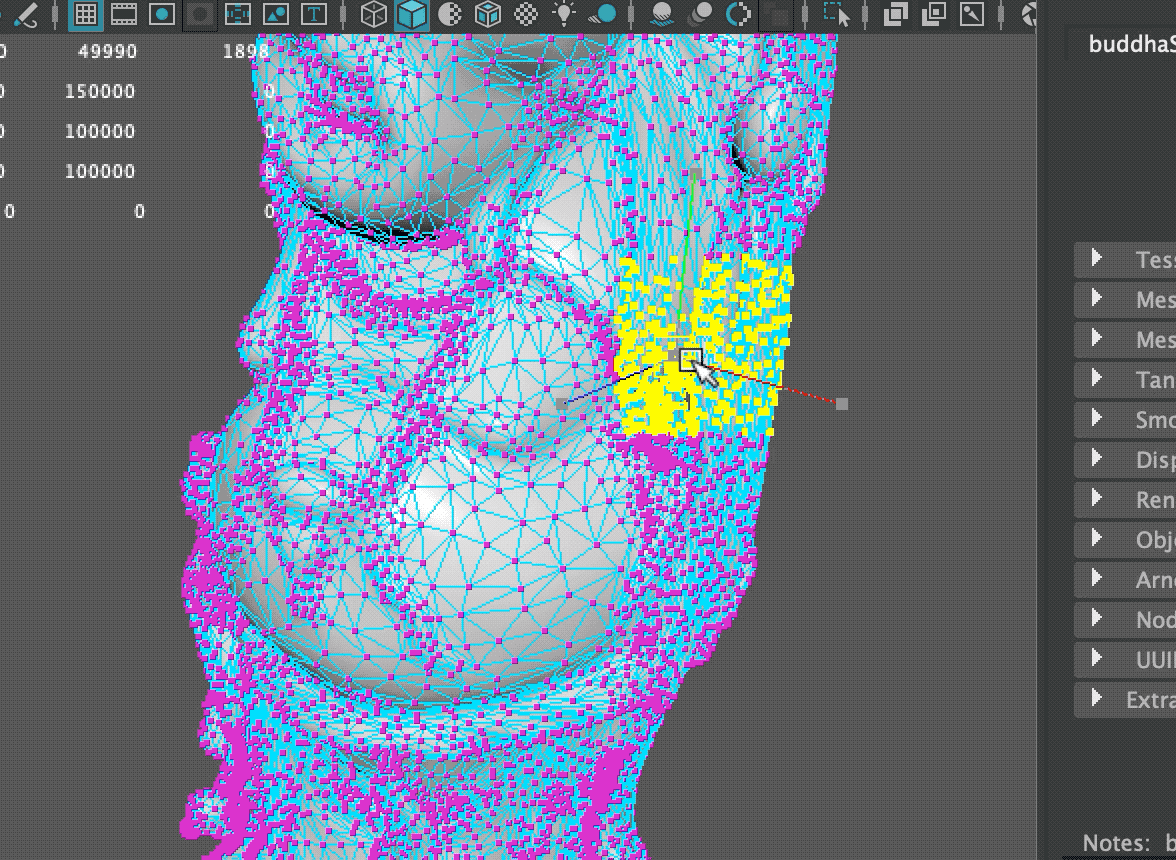Is this file available somewhere? I found a low res one I subdivided but I’d like to do some tests with the exact same file.
Thank you.
edit: On a Ryzen 2700X(3.7GHz, default clock), I get similar performance in 2.8 to your video which is painful, I can imagine how bad it is on slower hardware. I’ll try on my Surface Pro 2 some time. 
Developers don’t read BA forum. I am sure about that. I guess Pablo V. doesn’t even read rightclickselect, because on one of the streams he watched the top rating, and from the conversation it was clear that he did not know what they were written about. Maybe I’m wrong.
Similar topics should be written to developers directly, and not on BA forum.
Your CPU Single Core performance it’s exactly 2 times faster than my processor (A8-7600) I think I scored like 93 points in CineBench R15, your CPU is around 180+ points, so that’s already as bad as it can get 
At least the developers acknowledged the problem, let’s see if the performance will improve.
external developers start paying attention to the performance in their projects.
I am currently working on some redesigns to the syncing code to improve the code itself, and to optimize the algorithm for larger scenes. I expect my branch review to take the majority of my time in the next week, but I would also love to extend the outliner scrolling to drag and drop.
i got laggy today for some of my small scenes, during experiment dust shader with the free buddha statue which so famous, I found that edit mode for BLender is a pain. This is comparison 3dsmax 2017 vs blender 2.8, and my PC running 2 app as once. I am positive hope this is going to be fixed soon.
file attached fbx export from blender 2.8 to 3ds max buddha-statue-v1.fbx (4.7 MB)
blend file in case someone needed Stanford_Buddha.blend (3.5 MB)
Same with Maya 2018 (on a not too beefy 13 inch 2016 macbook). Let’s hope they find a solution.


If that also applies to editmode editing and armature deformation, then it would be a large step towards getting the performance at least back up to 2.79 level.
Address the rest of the bottlenecks and add the batch cache and we could be looking at performance improvements much in line with what the viewport drawing received.
My result (an heavilly subdivided sphere + lvl4 subsurf):
|Fps | Frame | Iter | Rdata2.80master | 4.8 | 206ms | 82ms | 11ms
Base | 4.5 | 240ms | 98ms | 22ms
Opti | 6.4 | 144ms | 22ms | 20ms
I think this is relevant news for devs
@Son @so3Datel Please post in this thread about it so that the devs see it, because I warned them about it 6 moths ago and nothing has happened and there seems to be rather little interest at all in this so far:
EDIT: Man, there was a whole discussion not loaded into view after this… I’m still not friends with this new forum system. ![]()
It’s known . According to the task for this , the undo system iterate over all data blocks and make a full copy of any changes. This endup doing a lot of I.O to harddrive …
The plane in the future is to only iterate over changed data blocks and do delta backups ( just backup the differences).
I’ve already asked an ignorant question:
why not use a database that records only the parameters that are changed in sequence?
That’s what delta backups are, a record of what changed, rather than a record of the whole state of things.
As far as why not do that, it’s a fair bit more complicated than just duplicating everything.
… but what I think, is that “rewriting” a parameter in the undo phase, (apart from probably interacting with the mesh) I don’t think it’s a complex thing to do (always speaking ignorantly)
There are runtime operations/ information that need to be recorded as will (to do it by storing parameters , Like brush strokes in Sculpt mode ) storing all this and managing it is going to make an undo system based on it very complex.
Aside from that using reverse operations means you have to recalculate things in reverse, which will introduce precision errors , which means you will not get the previous States accurately and if you do multiple undo steps those errors will accumulate…
I do not know…
I would divide the storage of memory blocks (by mesh and by brushstrokes and more) by storaging simple variables …
it is not possible that the simple undo of an object that has been moved starts scanning anything before restoring the previous variable.